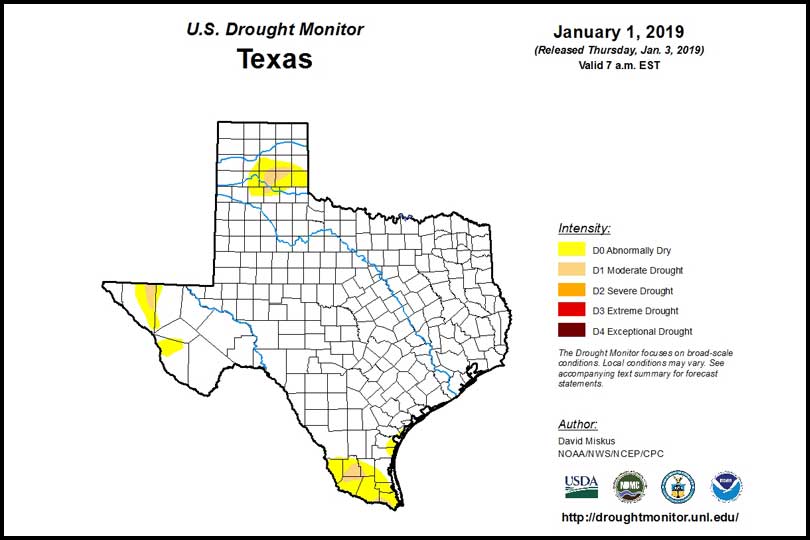By Jennifer Dorsett
Field Editor
With last year’s unpredictable weather still fresh on their minds, Texas farmers and ranchers are wondering what they’ll face in 2019. Will the Lone Star State start the planting season drought free?
But some of those counties in West Texas and the Panhandle have already received rain, snow or some type of moisture this week.
U.S. Drought Monitor Summary author David Miskus said southern Texas missed out on recent rains, causing new areas around Corpus Christi and further south to be added to the abnormally dry category.
Miskus noted a storm system will track across the Southern U.S. over the next few days, bringing more rain opportunities.
One year ago, more than 62 percent of Texas was experiencing some form of drought, with many areas reporting no measurable rainfall since October 2017.
But the remainder of 2018 and the start of this year look completely different.
The National Weather Service’s Fort Worth meteorologist, Tom Bradshaw, told the Texas Farm Bureau Radio Network 2018 was the second-wettest year on record for North Texas since the early 1900s.
Bradshaw attributes the most recent round of rains to an El Niño weather pattern.
“We’re still guided by the weak El Niño signal out of the Pacific Ocean,” Bradshaw said. “That usually means a somewhat wetter-than-normal winter for Texas, and we think that will probably continue as we go through January and probably on into February.”
Bradshaw said temperatures this month should stay near historical averages. He predicted above-normal rainfall and some snow for the remainder of January.
The Climate Prediction Center (CPC) raised the odds for a continued El Niño weather pattern during November to January to 96 percent, up from 84 percent just one month before.
In addition to the winter El Niño prediction made by the CPC, the 2019 edition of The Old Farmer’s Almanac predicts a cooler-than-normal summer with above-average rainfall for Texas.

